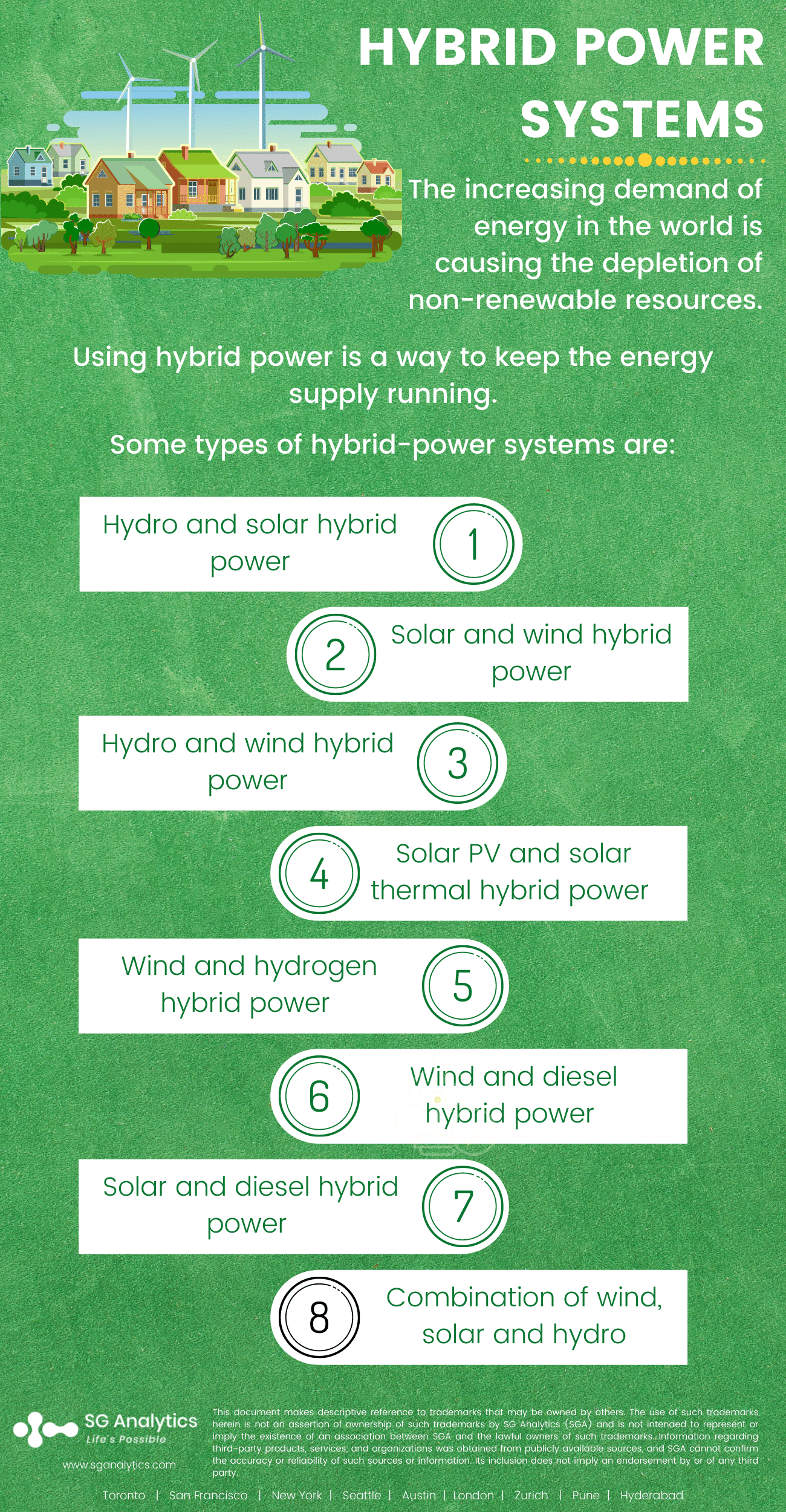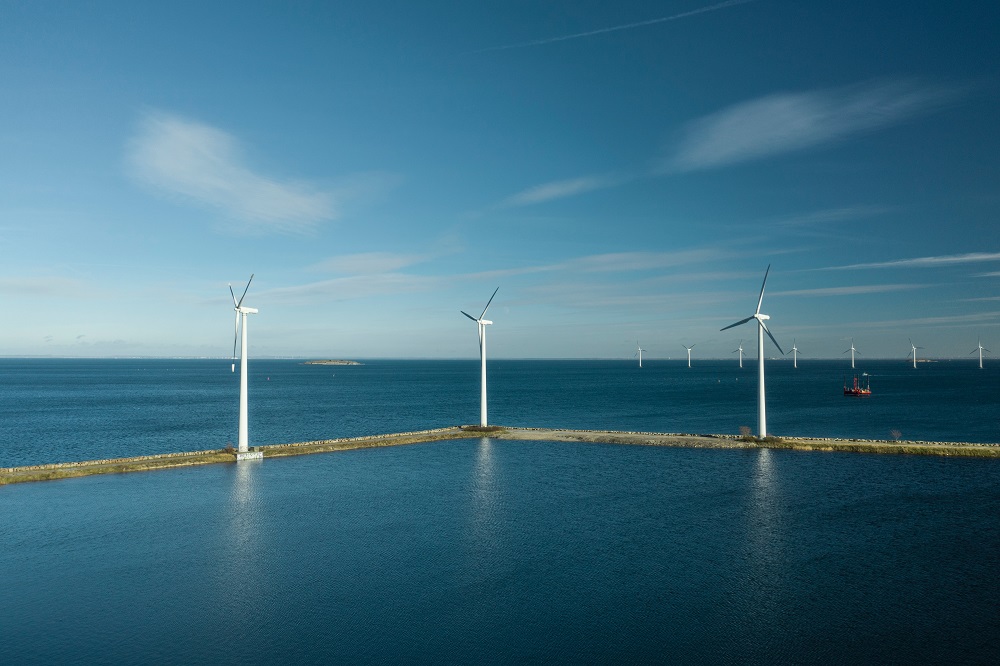The shift to a more sustainable market has been observed globally over the last decade. Sustainability is more than just a trend as of today. It is a widely adopted lifestyle shift so that individuals all around the world, and large scale corporations, become more accountable towards their planet. We are running out of resources, exploiting our surroundings and jeopardising our future and the world at large has realised that it is something that needs to be stopped.
The demand for energy is only going to grow over time, but the non-renewable sources of energy that we use largely are running short. In 2018, according to data analytics services, the energy demand rose by 1.7% (Iea) as compared to the year before, reaching historic heights. The cost of development and advancement of technology, government, economy, and nations should not be at the cost of the environment. This is why hybrid power is an important element that needs to be put to use.
So what exactly is hybrid power? What types of hybrid power exist in the world? What are hybrid power systems and how are they impacting the global energy market? Let’s find out.
Hybrid Power: What is it?
A large portion of all energy consumption is through electricity. It powers our homes, our devices, and now even a lot of our vehicles. Electricity is the reason behind the success of the cryptocurrency market, the blockchain movement, cloud adaptation and large scale global digital transformation. Clearly, with its extensive use case, it is also very resource intensive.
Up until recently, coal was the primary source of electricity generation in the world. Then as technology advanced, there were plants that would use other alternative sources of energy from the inexhaustible resources that were readily available to us in our environment. This included wind energy, solar energy and hydro energy. Now, all these options of renewable sources of energy only supplied limited amounts of energy so making a complete shift to renewable energy sources seemed difficult.
That was until hybrid power systems entered the situation. What is a hybrid power system? What are the resources needed to use hybrid power? Is it really effective?

Hybrid power is the usage of different technologies to extract electricity from multiple renewable and non-renewable sources of energy. It is a combined energy system that works together to generate electricity as a singular power system. In 2017, the hybrid market for power systems was valued at 477.71 million USD (Sage Journals), and this number is set to grow at a rapid rate, where data analytics services predict that their market share will be valued at 836.92 million USD by 2024 alone.
What are the types of hybrid power systems in use today?
Since a hybrid power system utilises multiple sources of energy, it is usually done by combining the most readily available sources in the region. This means there are multiple types of hybrid power available in the market. They can be categorised into the following sections:
- Hydro and solar hybrid power, which uses solar energy and hydro energy to generate electricity
- Solar and wind hybrid power, which uses a combination of solar and wind energy
- Hydro and wind hybrid power systems, which is a combination of hydro energy and wind energy
- Solar PV and solar thermal hybrid power system, which operates using solar PV cells that absorb the energy and solar thermal tools that can make it accessible for use round the clock
- Wind and hydrogen hybrid power, where wind energy is extracted and stored with the help of the electrolysis of hydrogen of water
- Wind and diesel hybrid power, which is a combination of electricity generated using wind turbines and diesel generators
- Solar and diesel hybrid power which uses solar PV cells to store energy as well as diesel generators to ensure longer durations of electrical power
- Completely renewable hybrid power systems are the latest development in the hybrid market because they use a combination of all three main sources of renewable energy, i.e., wind, solar and hydro to generate electricity
Read more: Australia’s New Renewable Record and What’s Next for Solar in 2022
What value does the hybrid power system bring to the world?
Even if the power system is not completely renewable, there are still a lot of benefits that come with using a hybrid power system to provide electricity to an entire grid. Some of these benefits are listed below.
Hybrid power uses the most readily available resources, making it a convenient method of obtaining electricity
There is an abundance of resources readily available in our surroundings that can be used as sources to extract energy, as long as the right tools are available. The advancements in technology enable corporations, governments, and regions to utilise these renewable sources of energy to produce lasting electricity. The ease of access to these resources is a great benefit to those regions where there is scarcity of non-renewable resources, making it more difficult to provide electricity, especially in developing nations and hybrid power systems solve this problem.
It has a wide reach and can be used to provide access to electricity even in remote regions
Getting fuel and electrical output to remote regions around the world becomes difficult in developing nations. This situation acts as a crutch to their growth and development because electricity is crucial to regional economic and landscape development. Hybrid power can be stored and reached to distant areas across the world with ease, thereby fixing this problem. If they have access to electricity 24/7 they can push their region to achieve technological advancement, get access to the internet, better network capabilities, and advance their economy.

The non-exhaustible nature of the resources used to power the hybrid power systems ensure they have a longer lifespan
Since the wind, the sun and the water are available to us in an unlimited capacity, their energy can be used to produce electricity. The components used to extract and store this energy have a long lifespan as well. The electricity produced is inexhaustible because the primary source is inexhaustible. The hybrid power systems are designed for longevity so they do not require more than regular maintenance so that they can produce the optimal output.
Read Also: Hybrid EV Batteries Market Set to Grow by 2030
Hybrid power is better for the environment as it produces less carbon emissions than a single non-renewable power system
In 2020 alone, using hybrid power systems, the carbon emissions produced had reduced by 900 million tonnes (Science Direct) . The positive environmental impact that hybrid power has is phenomenal, which is why there is more research being conducted to make this more accessible. A single non-renewable power system can operate at the same capacity but it will result in a much higher carbon emissions rate.
Hybrid power systems fill out the gaps of the other renewable sources of energy
There is always a gap in terms of fulfilment of requirements that renewable sources of energy have that makes it difficult for people to shift to a completely renewable means of energy consumption. A hybrid power system makes up for it. For example, a moderately sunny region cannot have full access to solar power throughout the year at all times so producing enough solar energy would be an issue. But if you combine the solar power generated along with say, hydroelectricity that is generated from nearby water bodies or even wind energy extracted from turbines, it can become possible to provide electricity to regions across the year using only renewable sources of energy. A hybrid power system can enable a complete shift to renewable energy sources for long term consumption of electricity.

Final Thoughts
Data analytics services have found that hybrid power systems provide areas around the world with easier access to renewable sources of energy. They also have a wider reach than the other non-renewable sources of energy because of their easy accessibility. The only thing that is missing that has disabled this phenomenon to become widely acceptable at large is that there is a lack of infrastructure in place that can make it a possibility. There is a lot of advancement in technology in terms of adoption of completely renewable hybrid power systems, which means that soon more countries around the world will be able to tap into the natural energy resources that are both inexhaustible and easily accessible to power their regions and generate electricity.









